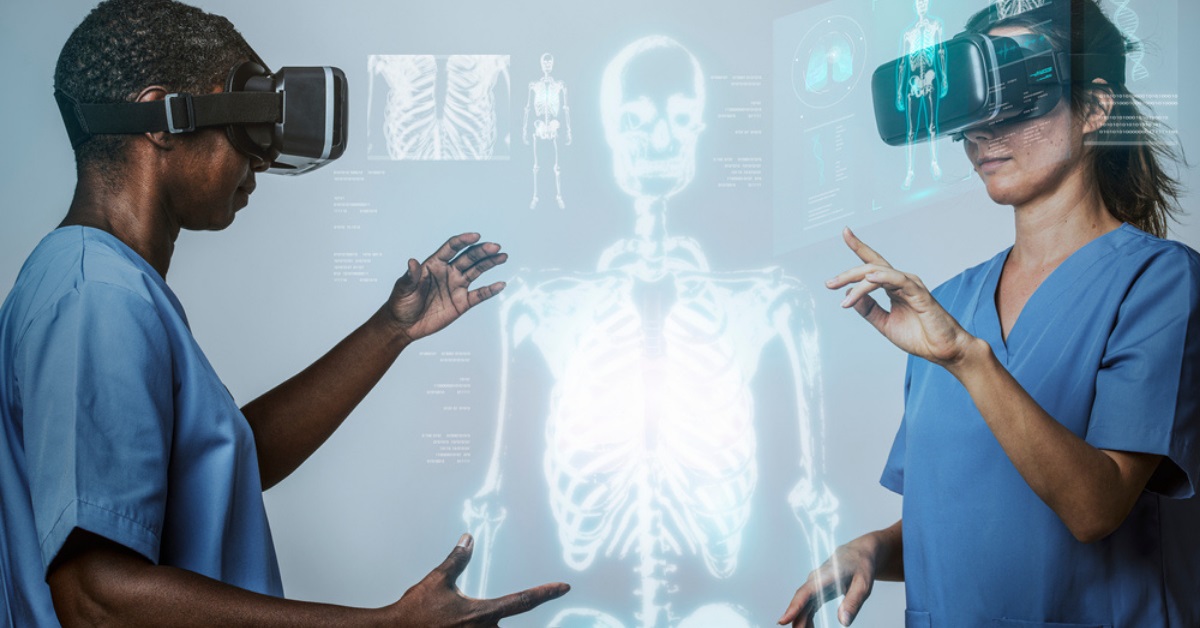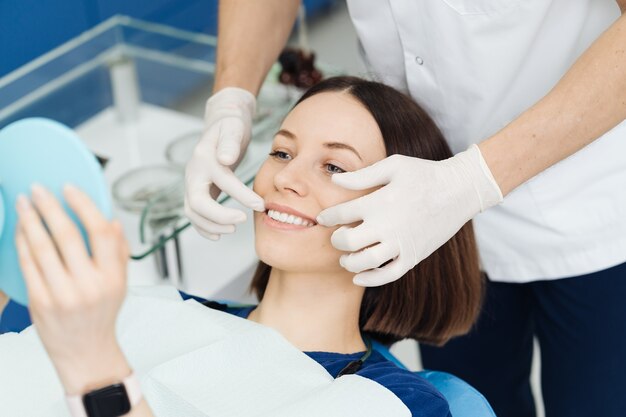Augmented Reality (AR) has emerged as a transformative force in various industries, and its impact on health care diagnostics is nothing short of revolutionary. This blog explores the multifaceted role of Augmented Reality in redefining health care diagnostics, offering insights into how this technology is enhancing medical imaging, improving surgical precision, and shaping the future of diagnostic practices.
Transforming Medical Imaging through AR Enhancements
Augmented Reality is increasingly playing a pivotal role in enhancing medical imaging for more accurate and detailed diagnostics. AR overlays digital information onto the real-world view, providing medical professionals with an augmented perspective during diagnostic procedures. This real-time augmentation proves invaluable in interpreting complex medical images such as MRIs and CT scans. By superimposing diagnostic data onto a patient’s anatomy, AR facilitates a deeper understanding of medical images, aiding in the identification of abnormalities and contributing to more precise diagnostic assessments.
Real-Time Surgical Navigation with Augmented Reality
One of the groundbreaking applications of AR in health care diagnostics is its integration into surgical procedures. Surgeons now have access to real-time augmented views of the patient’s anatomy during surgeries, enhancing their spatial awareness and precision. This technology enables surgeons to navigate through intricate anatomical structures with greater confidence, ultimately leading to more accurate diagnoses and improved outcomes. Augmented Reality in surgical settings is revolutionizing the way medical professionals approach diagnostics by providing an unprecedented level of real-time, contextual information during procedures.
AR-Based Medical Training for Enhanced Diagnostic Skills
Augmented Reality is reshaping medical education and training, fostering an environment where diagnostic skills can be honed in a more immersive and interactive manner. Medical professionals and students can engage in AR-based simulations that replicate various diagnostic scenarios, allowing them to practice interpreting medical images and making diagnostic decisions. This hands-on approach enhances the development of diagnostic skills, providing a realistic and risk-free environment for learning. Augmented Reality’s role in medical training is not only shaping a new generation of diagnosticians but also contributing to continuous improvement in diagnostic accuracy.
Remote Consultations and Collaborative Diagnostics
In an era where connectivity is crucial, Augmented Reality facilitates remote consultations and collaborative diagnostics. Medical professionals can use AR applications to share real-time diagnostic information with colleagues regardless of geographical distances. This collaborative approach enables multidisciplinary teams to collectively analyze medical images and contribute to more comprehensive diagnostic assessments. This level of connectivity enhances the efficiency of diagnostics, allowing experts from various fields to collaborate seamlessly and ensuring that patients receive the benefit of diverse expertise in their diagnostic journey.
Enhanced Patient Education and Engagement
Augmented Reality is not only transforming the way medical professionals approach diagnostics but also empowering patients with a deeper understanding of their health conditions. AR applications allow patients to visualize their medical images in an augmented format, providing a clearer comprehension of their diagnoses. This visual representation enhances patient education, enabling individuals to make informed decisions about their health. Augmented Reality bridges the communication gap between medical professionals and patients, fostering a collaborative approach to diagnostics where informed and engaged patients play an active role in their diagnostic and treatment plans.
The Integration of Wearable AR Devices in Diagnostics
The advent of wearable Augmented Reality devices is expanding the scope of diagnostics by bringing AR directly into the hands of medical professionals. These devices, such as AR-enabled smart glasses, offer a hands-free and portable solution for accessing diagnostic information. Medical professionals can wear these devices during patient consultations or diagnostic procedures, gaining immediate access to augmented views and relevant data. This integration of wearable AR devices into diagnostics not only enhances efficiency but also provides a more seamless and intuitive user experience for medical professionals.
Overcoming Diagnostic Challenges with AR-based Solutions
Augmented Reality addresses several challenges in traditional diagnostic practices. For instance, interpreting complex 3D medical images on 2D screens can be challenging. AR mitigates this challenge by allowing medical professionals to view and interact with 3D visualizations in a more natural and intuitive way. Additionally, AR facilitates the overlay of real-time diagnostic data onto a patient’s body during examinations, aiding in more accurate assessments. By overcoming these challenges, Augmented Reality emerges as a catalyst for elevating the precision and efficacy of health care diagnostics.
Privacy and Security Measures in AR-based Diagnostics
As Augmented Reality becomes an integral part of health care diagnostics, ensuring the privacy and security of patient data is paramount. The implementation of robust encryption protocols and secure data transmission mechanisms is crucial to safeguarding sensitive diagnostic information. AR developers and health care institutions must prioritize the adoption of stringent privacy measures to instill confidence in patients and uphold ethical standards in the use of Augmented Reality for diagnostics.
The Future Landscape of Health Care Diagnostics with AR
In conclusion, the role of Augmented Reality in health care diagnostics is dynamically shaping the future of medical practices. From enhancing medical imaging and surgical precision to transforming medical training and patient engagement, Augmented Reality is redefining the diagnostic landscape. As this technology continues to evolve, its seamless integration into health care diagnostics promises a future where diagnoses are not only more accurate and efficient but also more accessible and patient-centric. The journey of Augmented Reality in health care diagnostics is an exciting trajectory that holds the potential to revolutionize the way we perceive, interpret, and address medical conditions.






